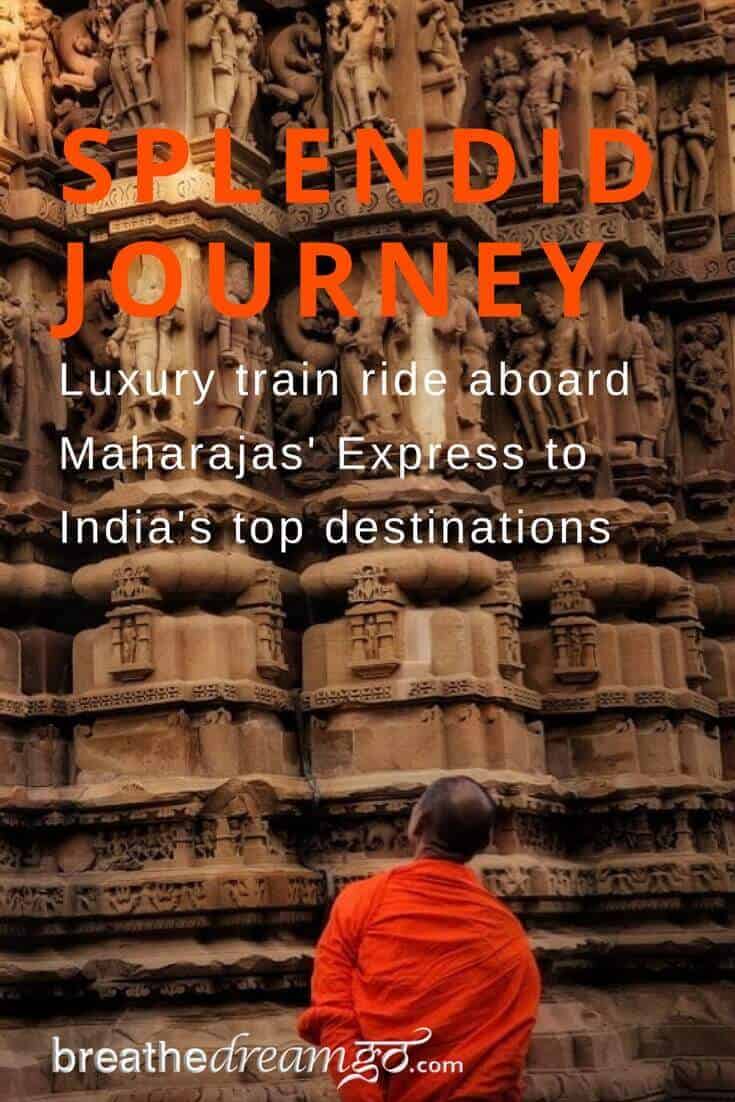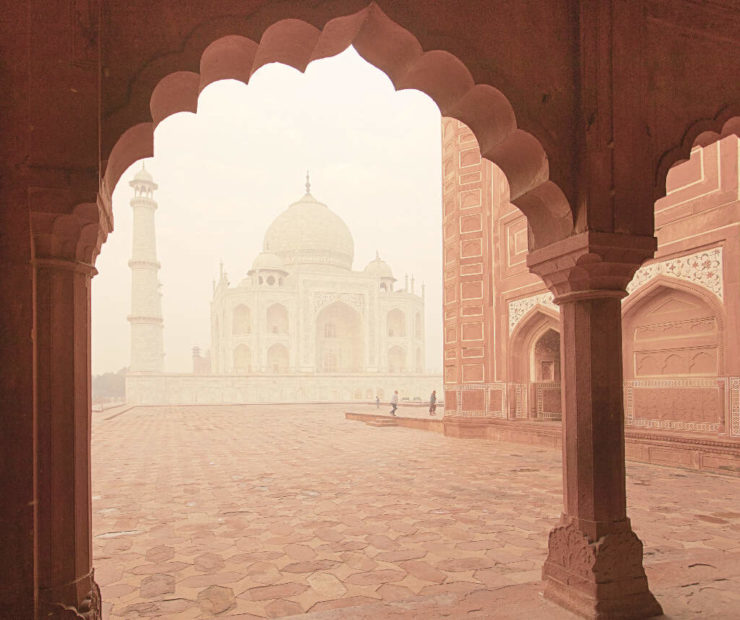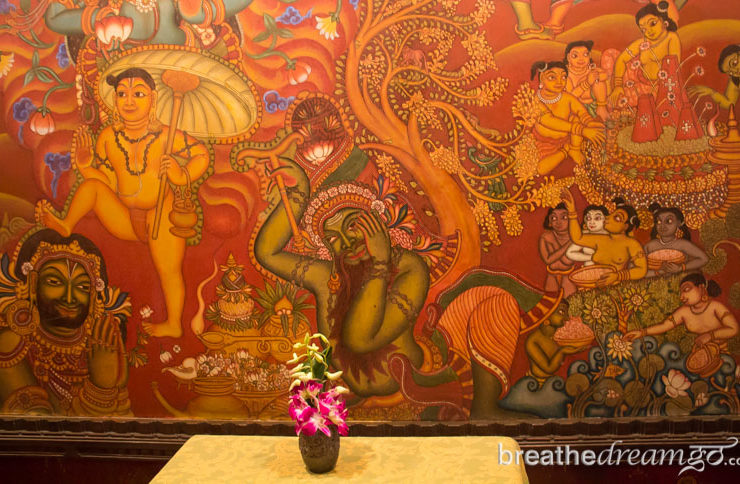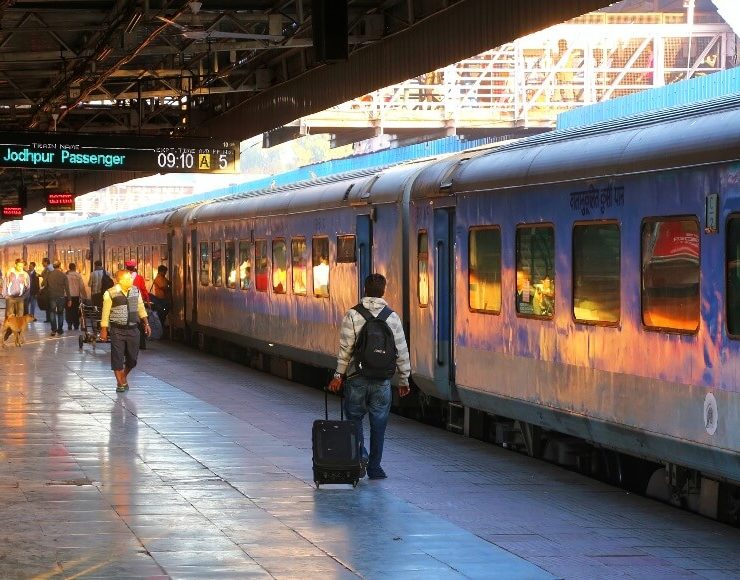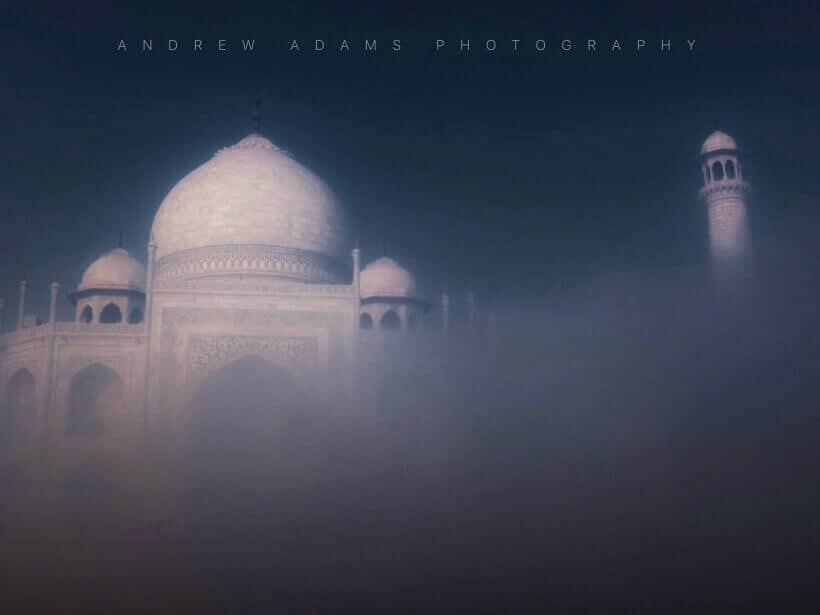
Table of Contents
The Indian Panorama itinerary visits some of the best tourist places in India: Jaipur, Taj Mahal, Varanasi, Ranthambhore
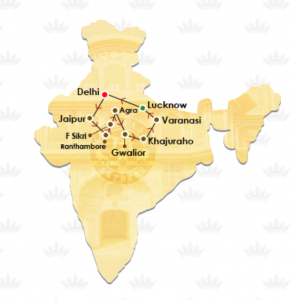 A magic carpet ride. That’s what The Indian Panorama journey aboard the Maharajas’ Express luxury train is like. A magic carpet ride to some of the top India destinations, and best tourist places in India. Each one of the eight stops is, by itself, magnificent. They each offer the visitor an experience of India’s rich cultural heritage, stunning architectural marvels, profound spiritual life, and exquisite culinary traditions. It’s a magical romp through the best that North India has to offer. Read on for excerpts from my diary of the trip. And to find out about the train itself, read What’s it like to travel the Maharajas’ Express train?
A magic carpet ride. That’s what The Indian Panorama journey aboard the Maharajas’ Express luxury train is like. A magic carpet ride to some of the top India destinations, and best tourist places in India. Each one of the eight stops is, by itself, magnificent. They each offer the visitor an experience of India’s rich cultural heritage, stunning architectural marvels, profound spiritual life, and exquisite culinary traditions. It’s a magical romp through the best that North India has to offer. Read on for excerpts from my diary of the trip. And to find out about the train itself, read What’s it like to travel the Maharajas’ Express train?
The Maharajas’ Express train has been voted “The World’s Leading Luxury Train.” Owned and run by the IRCTC, the Maharajas’ Express travels several routes throughout North and South India. Photographer Andrew Adams and I were invited aboard the Maharajas’ Express train to experience life on a luxury train in India. For eight days, we travelled The Indian Panorama route across four states in North India. We started in Delhi and travelled to Jaipur and Ranthambhore in Rajasthan; on to Agra for Fatehpur Sikri and the Taj Mahal; then Gwalior and Khajuraho in Madhya Pradesh; and finally Varanasi and Lucknow in Uttar Pradesh.
Andrew is a superb chronicler of India in image. Check out out his photography here on his website AndrewAdamsPhoto.
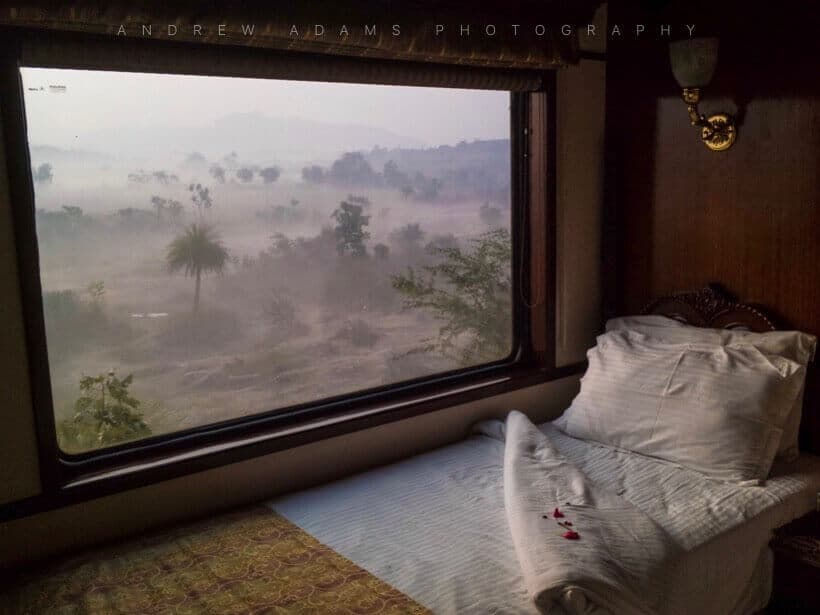
Day 1: Departure from Delhi to eight India destinations
We left Safdarjung railway station in Delhi amid a panoply of flowers and music and settled in for a sumptuous dinner in the Mayur Mahal. There was a palpable sense of excitement in the air as we pulled out of the station and headed for our first destination, Jaipur, one of the top tourist places in India. I fell asleep in my private room in a state of bliss. What could be better than falling asleep to the rocking motion of a train, in a comfortable bed, and knowing the next day would be filled with adventure and discovery in India?
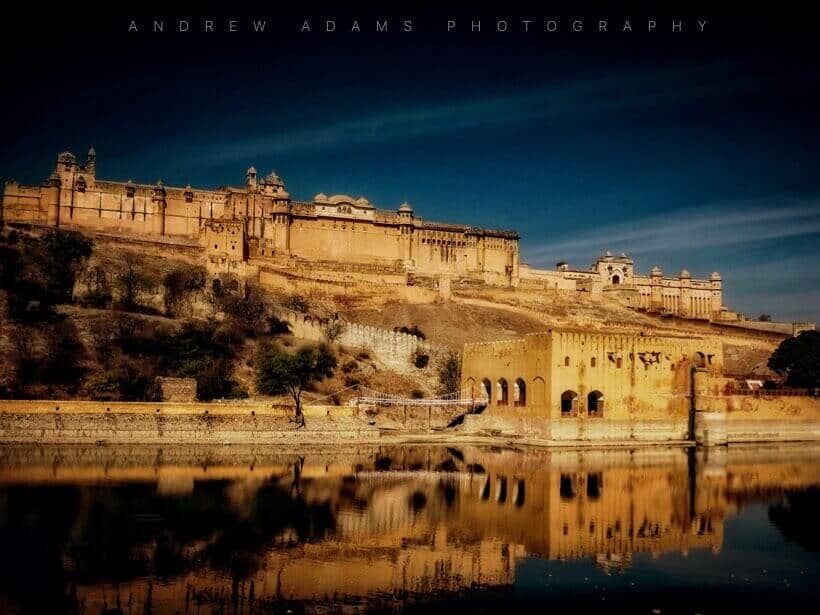
Day 2: Jaipur and some of the top tourist places in India
I was in a deep sleep when my valet Bansi knocked on the door with ginger-lemon-honey tea. He handed me a card – Amusing anecdote about Jaipur – and filled me on the day’s activities and timings. It was still foggy outside as we pulled into Jaipur, but the sun burst through by the time we disembarked at 10 am. We were greeted by musicians and garlanded with flowers before making our way to a waiting bus.
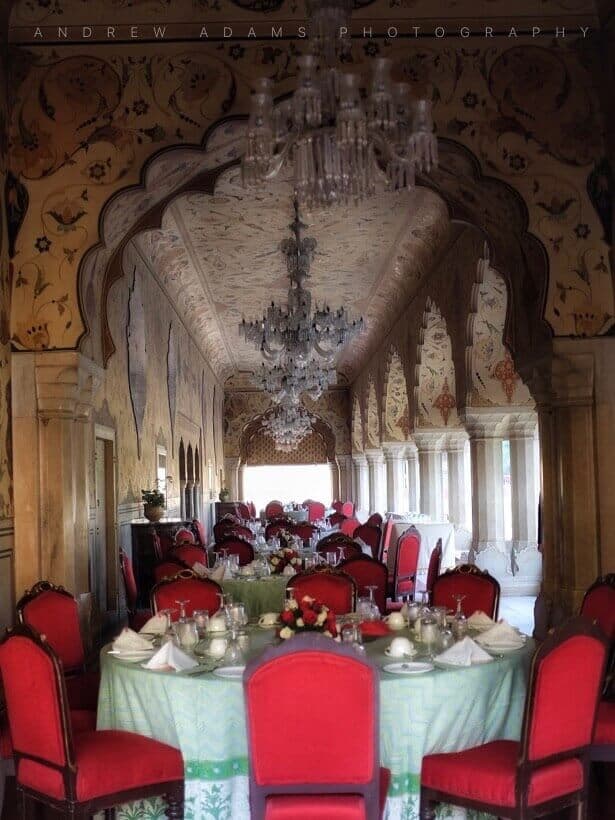
Our first stop was Amber Fort, the magnificent bastion that overlooks the city. We gathered around a guide who told us about the history of the 16th century fort, and what we would expect to see inside. It’s one of the best-preserved forts in India, and an absolute must-see when visiting Jaipur. Moving from courtyard to courtyard, you are greeted with beautiful inlaid work, mirrored ceilings, delicate marble relief panels, lush gardens, soaring arches, and spectacular views … everything you want in a Maharaja’s palace and more!
Afterwards, we drove to the City Palace, in the Pink City, where we were heralded by a parade of musicians and elephants through the inner courtyard. We were ushered though a large door into a private enclosure and invited to meet the elephants. I patted one called Muskaan, and fed him bananas. Afterwards, we ate lunch in a dining room that opens onto the lawn, an intricately decorated room fit for a queen. The afternoon was spent shopping in the main market of the Pink City – I bought jewellery and traditional juttis (leather shoes). Then, back to the train for dinner. I ate the Punjabi Thali, one of my favourite meals of the entire journey.
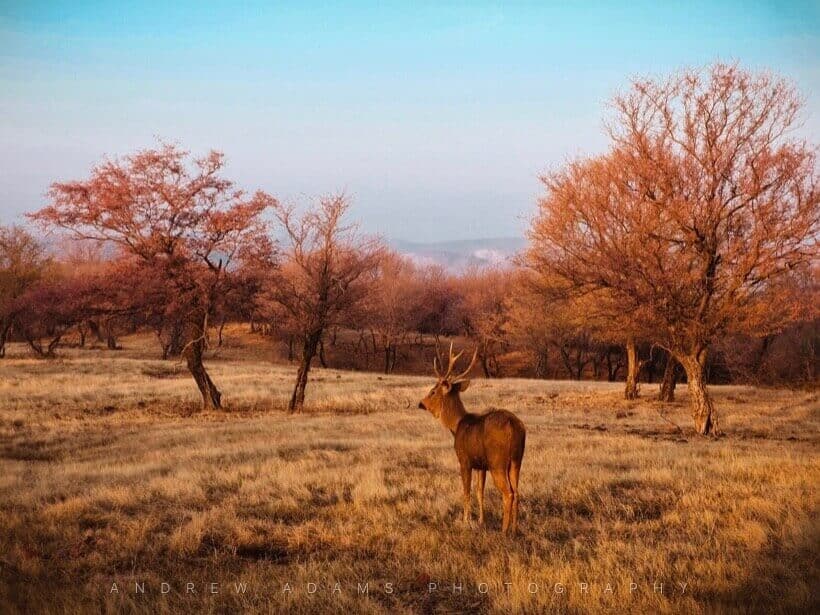
Day 3: Ranthambhore and Fatehpur Sikri
It’s hard to convey the feeling of being comfortably ensconced in my suite on the Maharaja’s Express as it travelled towards Sawai Madhopur and Ranthambhore. The morning was misty and cool, and we drank steamy chai as we assembled at 6:30 am to drive into Ranthambhore tiger reserve. We were given fleece blankets to ward off the early morning chill, and drove by canter to Zone 3. A very beautiful zone, we were able to take some great shots of one of the most picturesque parks in India. Our highly experienced guide, Vijay Singh, followed the sight of pug marks and the sounds of the animals’ alarm calls, but we did not see a tiger. However, we did hear mating calls, and saw lots of other animals and birds, including a group of crocodiles sunning themselves on an island.
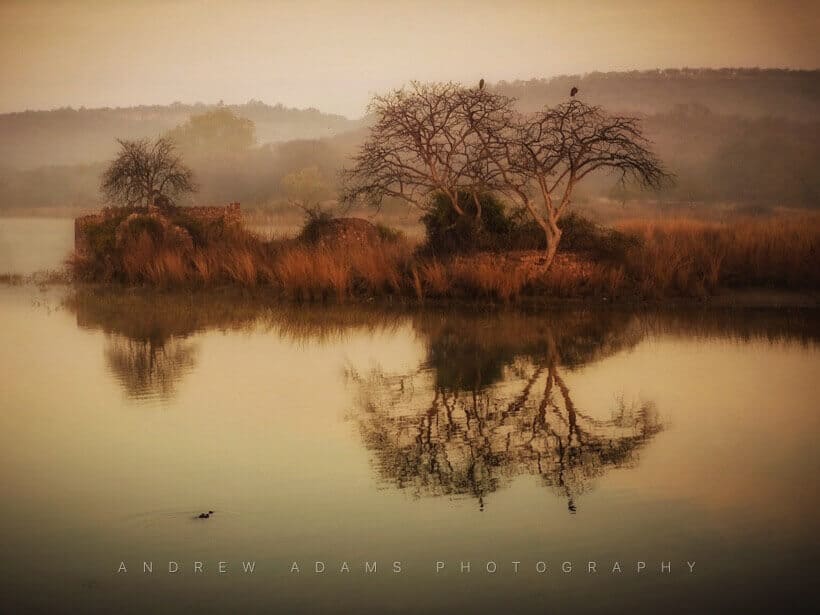
We had breakfast and lunch on the train as we moved towards the abandoned city of Fatehpur Sikri. We were falling into the rhythm of the train by day three. Sometimes it moves and sometimes it stops. It has a rhythm of its own. It also has a special purpose, which I learned about while chatting with Sunil Tarneja of Maharajas’ Express. Early in the 20th century, the train connected various diverse parts of India, and gave travellers the opportunity to experience this diversity. There were refreshment rooms at each station serving specialty dishes from the region. The Maharaja’s Express essentially does the same thing, giving travellers a taste of the rich and diverse culture of India. It is, however, a luxurious taste … and the local, street-level flavour is not part of the experience. This is the only negative about my experience: the train was built to the highest standards, the itinerary is brilliant, the service and the food could not be better. I just missed the hustle-and-bustle of the everyday life of India.
In the afternoon, we stopped at Fatehpur Sikri, and toured the abandoned city. I’ve been before, but was still amazed by the stories trapped in stone of Akbar and his three wives – one Muslim, one Hindu, one Christian – who lived here only for a short time. Akbar built the city to celebrate the birth of his son, Jahangir, but a water shortage forced him to abandon it. It is well worth the trip from Agra.
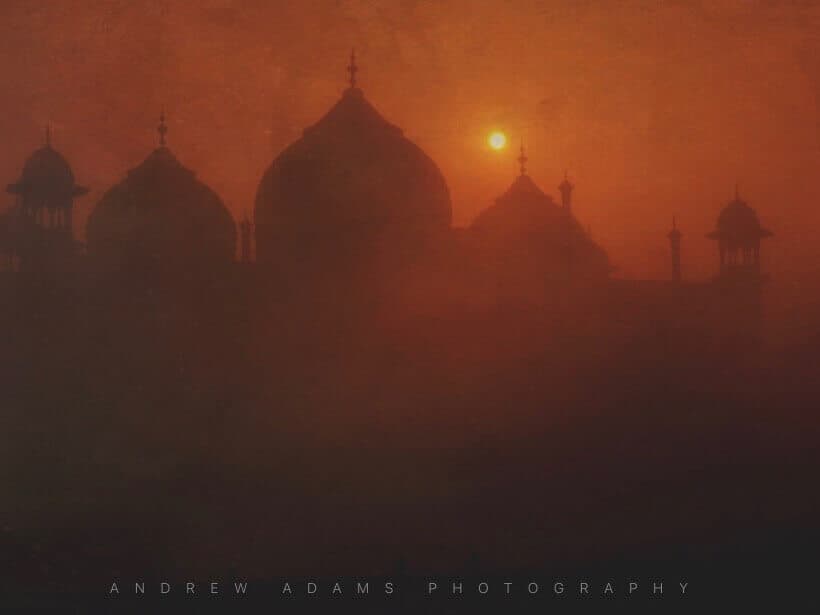
Day 4: The Taj Mahal and Gwalior
On the morning of day four, we arrived in Agra. It was a cool, foggy morning as we proceeded to head directly to the Taj Mahal. We walked right in – there was no lineup – but when we walked through the magnificent red gate, we couldn’t see the Taj Mahal at all due to the fog. Our tour guide Satya said, “Accepting life ‘as it is’ is a special attribute of Hinduism.” So, we had the opportunity to practise this wisdom by accepting our limited view of the Taj Mahal. Satya is an exceptional man who hails from Hyderabad and speaks 10 languages. His commentary was always thoughtful and knowledgeable and he added a lot of depth to the trip.
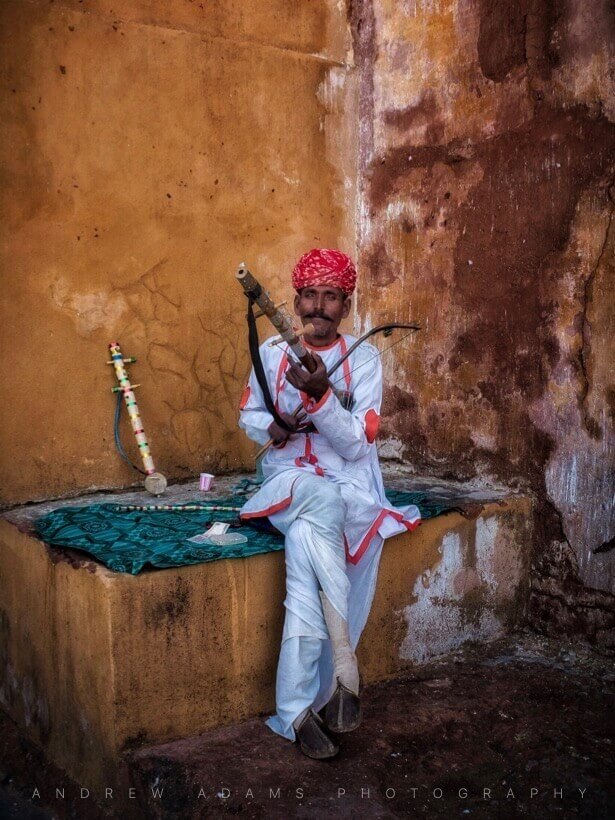
It was, in fact, quite magical to see the Taj Mahal emerge slowly from the fog. And it certainly offered great photo opportunities. By the time we left for lunch, the sun was out and the Taj was almost fully emerged. We walked a short distance to the Taj Khema and had a champagne breakfast on the lawn, with the Taj Mahal as the backdrop. Live musicians played – tabla and sitar – a palm reader told us our (good) fortunes, and women threw rose petals in the air. The Maharajas’ Express makes every occasion memorable, and they know how to capture the special magic of India.
Back on the train, I slept until we reached Gwalior, a historical city in Madhya Pradesh. We were now in our fourth state: NCR (National Capital Region), Rajasthan, Uttar Pradesh, and now, Madhya Pradesh. Our bus took us directly to the impressive mountain-top fort that overlooks this city of 1.5 million. We toured the fort, some cliff-top temples, and a row of massive Jain statues carved out of the cliff face. We had dinner that night on the lawn of the Jai Vilas Palace, which has 400 rooms and was designed by an Italian architect. It was a long day, full of wonders and splendours, and I slept very soundly that night, though the train never left Gwalior station.
Day 5: The splendours of Khajuraho
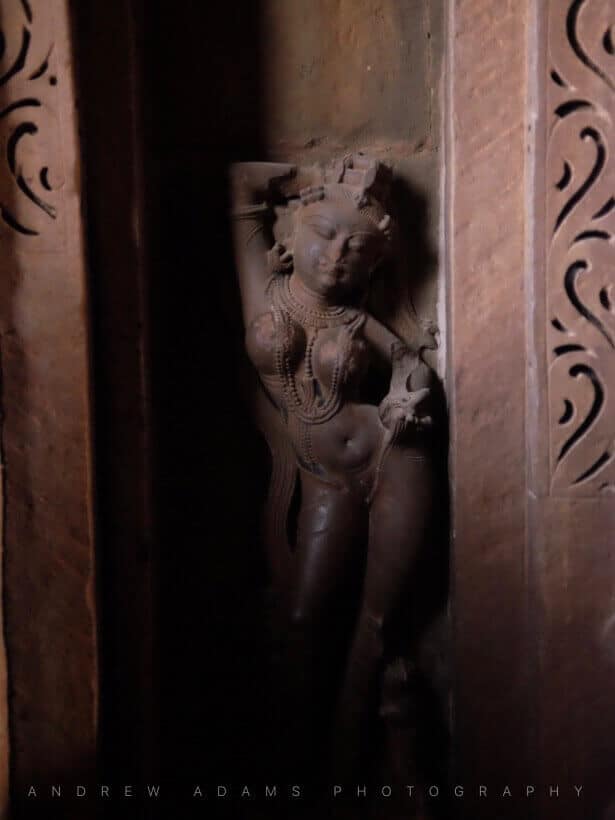
At about 6:30 am, the train left Gwalior for Khajuraho. I sat in my comfortable bed drinking tea, and watched the sun come up over the fields of Madhya Pradesh, one of my favourite states, headed for one of my favourite places. It was a lovely moment on the train. I love Khajuraho and I was excited to see the beautiful temples again, and to enjoy the vibe of this small, laid-back town. We headed right for the Western Group of Temples, which are the most spectacular. I left the tour to take advantage of one of the options that the Maharajas’ Express offers: a massage at The Lalit hotel in Khajuraho.
The Lalit is a lovely hotel, set on a large property with a great view of the temples. I love the spacious, uncluttered style of this hotel, and the gracious service. The spa area is quite large, and has a lot of amenities. I could well imagine staying in The Lalit for a few days and enjoying the gorgeous pool and spa, close proximity to the sublime temples, and the sunny, relaxed location in Madhya Pradesh. I recommend taking this option as it is a very soothing and relaxing addition to all the activities the itinerary offers. My one criticism of the train and the itinerary is there are few opportunities for exercise, so a massage can help work out the knots.
Day 6: India’s holiest city, Varanasi
We crossed the bridge over the Ganga River into Varanasi and I could see the ghats in the distance, spread out along the river as far as the eye could see. The train was delayed going into the station for an hour – a rare moment of itinerary interruption during the entire trip. Finally we disembarked amid the chaos of Varanasi station, and a crowd gathered around to watch us as we went through the usual spectacle of flowers, garlands, music. Our first stop was the Taj Gateway for lunch, before the group went on to Sarnath, where Buddha first taught the Dharma after his enlightenment. Photographer Andrew and I chose to dive into the narrow gullis (alleys) of the old city, and I went to Kashi Vishwanath Temple.
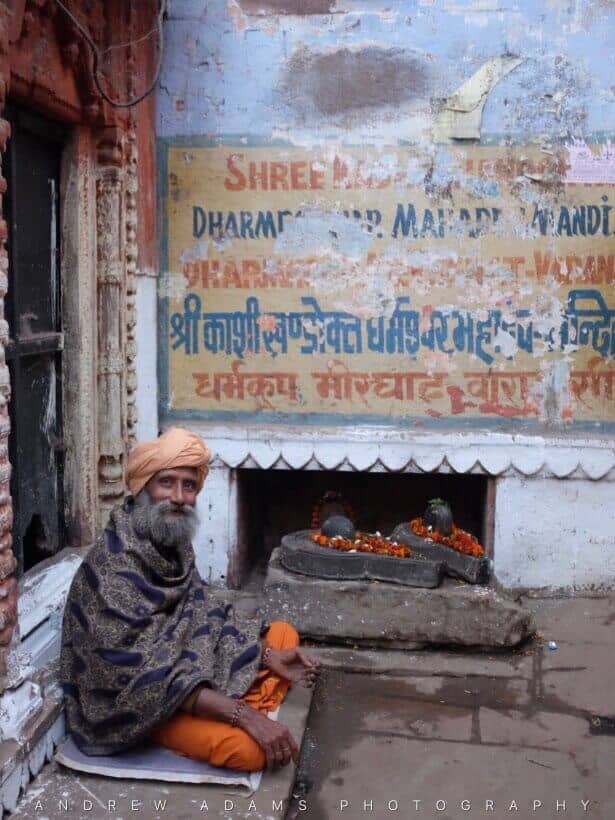
Deeper and deeper into darker and murkier lanes we went. Stalls lined each side as people, cows, bikes, motorcycles, and dogs streamed by – along with regular funeral processions, bodies, wrapped in white and garlanded with flowers, held aloft on stretchers on the shoulders of loved ones. Round and round we went, looking for the entrance to the temple. The ancient Kashi Vishwanath Temple is deeply buried in the city, almost impenetrable to outsiders. But finally we discovered the small laneway that serves as entrance. A series of guards ensure that visitors leave all bags and electronics outside, and another contingent checks foreigners’ passports. In fact, I think I was lucky to get in as a foreigner, as I have heard that only Hindus are allowed in the temple. And inside, I was ushered past the lineup directly into the inner sanctum. It’s a small, crowded, ancient space, the patina of age thickly applied and the atmosphere charged with sanctity. I left reeling from the heady ambience.
Just before sunset, we met up with the group at Dasashwamedh Ghat, where the evening Ganga Aarti takes place. We were escorted onto a couple of waiting boats, the upper decks covered in cushions where we could relax and enjoy floating on the Ganga in the cool, moist night. We jostled among the boats to position ourselves to see the one of the great sacred spectacles in India – the Varanasi Aarti. After our boat ride, we went back to the train for a late dinner – but not before stopping to buy Banarasi silk saris. I bought a stunning black silk sari with a silver zari border … after a heavy round of intense negotiating! On the train, I had a seafood dinner in the Rang Mahal and slept very late. I was wired from the energy of Varanasi – from the Kashi Vishwanath Temple, the Ganga Aarti, and the frenetic, intense energy of the city.
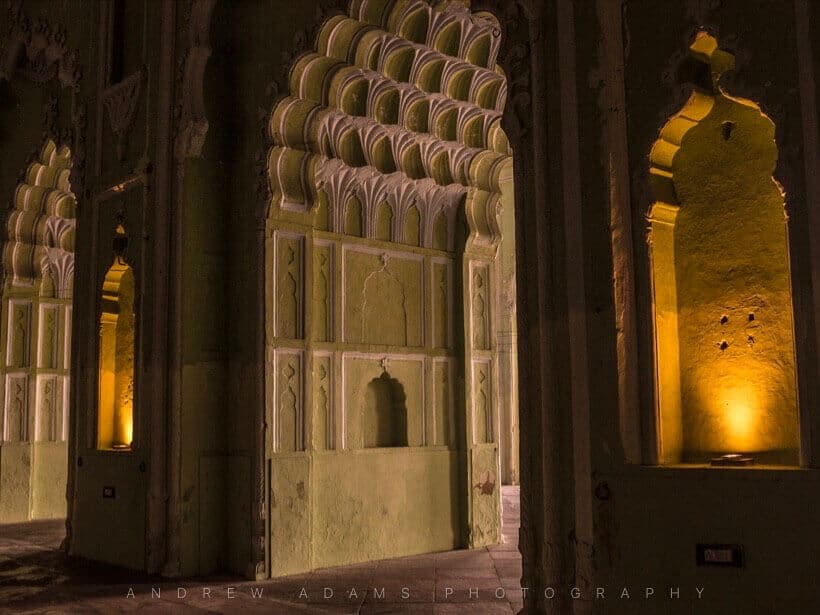
Day 7: Lucknow, City of the Nawabs
The next morning, we pulled into an abandoned station on the edge of Lucknow. We had to leave at 8 am to drive 45 minutes into the city. Our first stop was the Bara Imambara, and in anticipation, I dressed for the occasion – knowing I would have my photo taken at an extremely picturesque location. (I did this at the Taj Mahal, too.) The grand Bara Imambara is an 18th century Muslim shrine, and the massive size and ornate late Mughal design make it one of the top India destinations. It’s certainly a main tourist attraction in Lucknow.
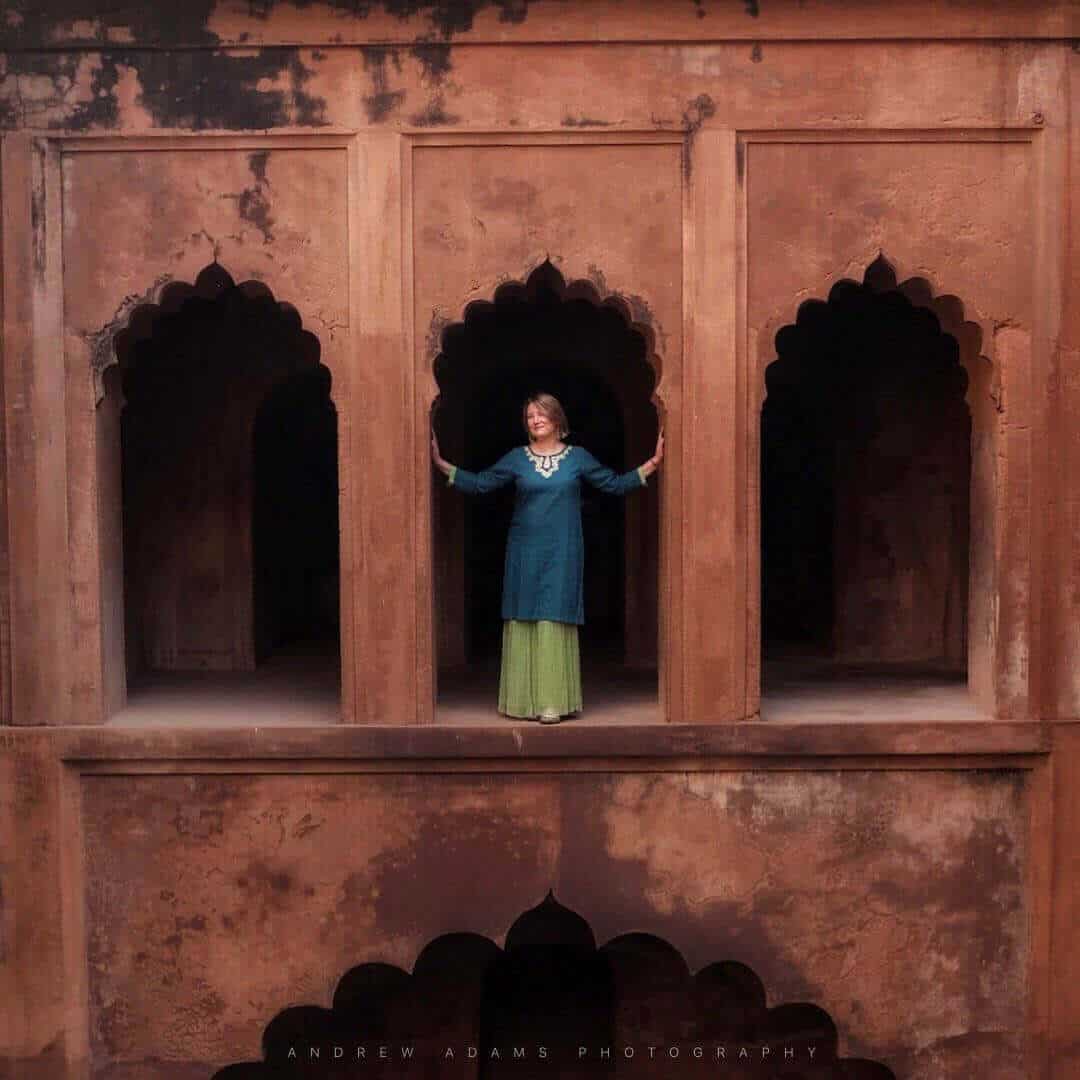
Next stop was the British Residency, ground zero for the Indian Rebellion of 1857 (formerly called the Mutiny). I was both intrigued and hesitant about visiting this monument as I have read many reports about the fighting and atrocities that took place here during the siege of Lucknow. The place is exactly as it was when the smoke cleared and the fighting stopped. Nothing has been repaired, the bullet holes and cannon damage are all clearly visible. The government has added commemorative plaques and statues, and keep it well maintained, otherwise it is preserved as is, for posterity. We took our time to walk the leafy grounds on a warm sunny day, and to imbibe the history and the atmosphere. I was glad to see the way this tragic event was sensitively commemorated. Though the British were in the wrong for occupying India, nevertheless, that doesn’t make this violent episode any less tragic for both sides. About 2,000 men, women and children were killed, and many are buried in the onsite cemetery.
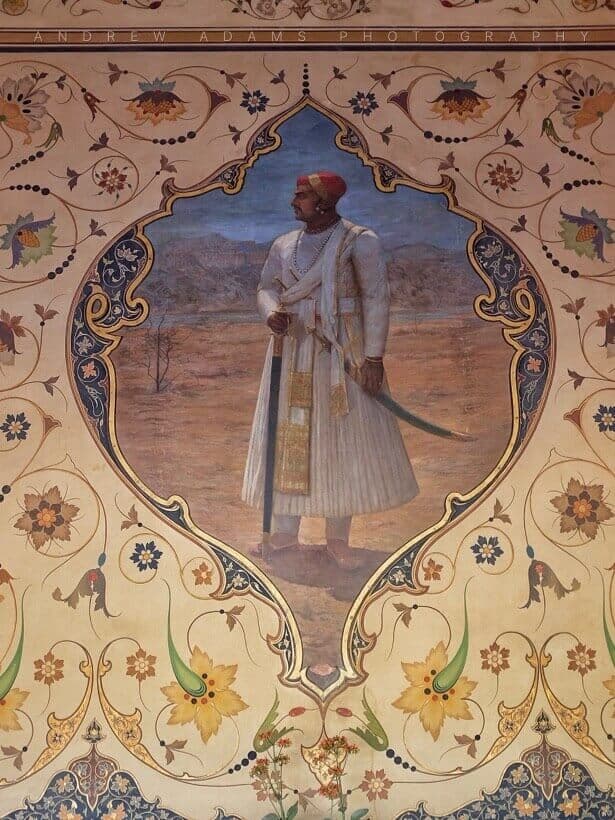
Our day in Lucknow ended with a lavish meal at the Taj Hotel featuring the city’s famous Awadhi cuisine: various kebabs, lamb korma, meat and vegetable biryani, kulfi and more. It was a rich, filling meal, served with wine, that completely wiped me out, especially after the day’s activities. I slept on the bus back to the train station.
For the last night on the train, everyone was given Indian clothes – the ladies got saris and the men sherwanis – and we all gathered for a lively party in the Safari Bar. The music was turned way up, and we danced to Indian folk tunes and Bollywood hits. Finally, a last glorious dinner – lobster! And then off to bed, to arrive in Delhi the next morning and the end of the magic carpet ride.
NOTE: Thanks to the Maharajas’ Express for inviting Andrew Adams and I to experience the Indian Panorama journey as hosted media. As always, my opinions are my own, my stories are heart-felt, and I only make recommendations based on personal experience and with the needs of my readers in mind. This post may contain affiliate links. Please read our Disclosure Policy for more information. #MediaTrip
PIN IT on Pinterest
If you enjoyed this post, please sign up to The Travel Newsletter in the sidebar and follow Breathedreamgo on all social media platforms including Instagram, TripAdvisor, Facebook, Pinterest, and Twitter. Thank you!


